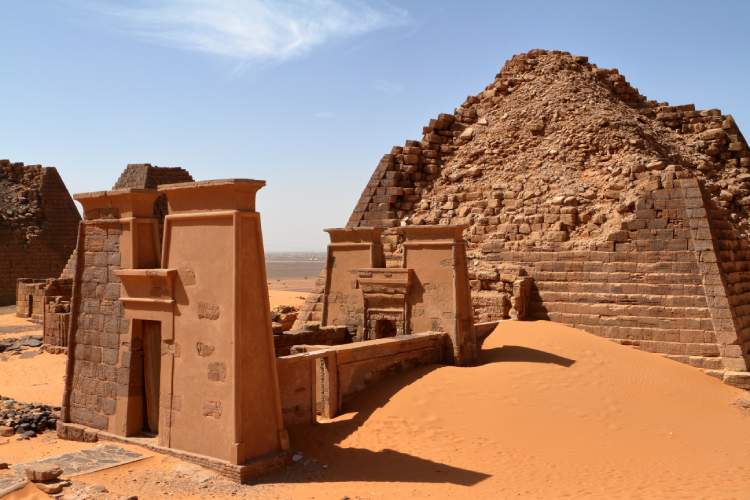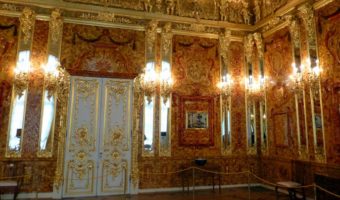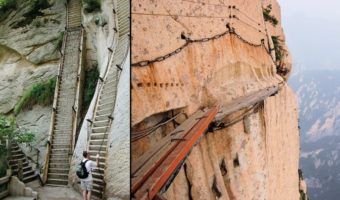Did You Know Sudan Has More Pyramids than Egypt?
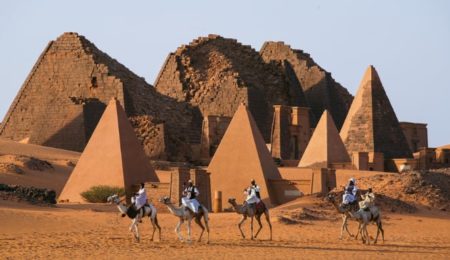
The word “pyramids†is synonymous with the massive, triangular Egyptian tombs built for pharaohs and their consorts, symbolizing their power and divine status. But do you know that Egypt isn’t the pyramid capital of the world? In fact, the honor of having the most standing pyramids in the world belongs to Sudan, Egypt’s southern neighbor! More than 250 Sudan pyramids populate the desert sands near the ancient city of Meroë, compared to the 118 pyramids in Egypt. No wonder UNESCO declared this large cache of pyramids a World Heritage Site in 2011.
A Glimpse Into the Rich History of the Meroë Pyramids
The Nubians were the early inhabitants of the Central Nile Valley, which is in present-day northern Sudan and southern Egypt. Once home to the Kingdom of Kush, Sudan was a rival to Egypt. It embraced the culture and beliefs of its neighbor. The tale of the rise and fall of the Kingdom of Kush is a testament to a largely untold chapter of African history.
The Kushites embraced many aspects of Egyptian culture. When the Egyptian Empire collapsed in 1070 BCE, Alara, King of the Kush, who led the Nubian dynasty, spearheaded a renaissance of Egyptian culture, including constructing their own pyramids.
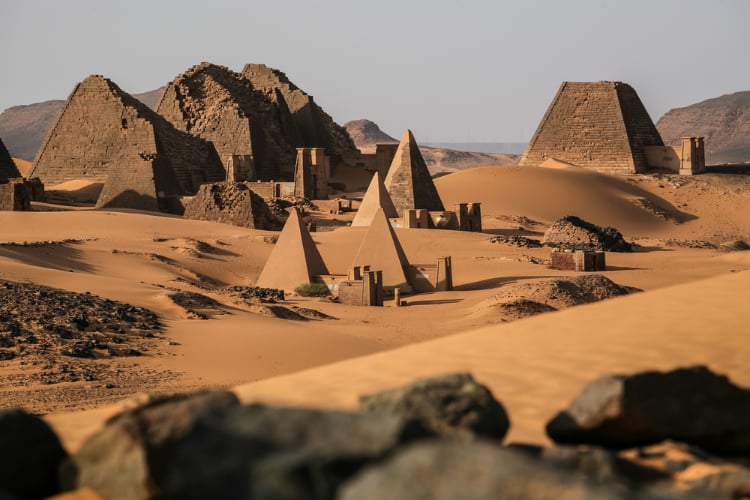
The Nubian dynasty invaded their neighbors to the north. Alara’s grandson Piye moved into Egypt and extended his control to the Nile Valley down to modern-day Khartoum. Piye became the first pharaoh of Egypt’s 25th dynasty, and for nearly 100 years, Egypt was ruled by leaders now dubbed the “Black Pharaohs.” Although Piye returned to Nubia after conquering Egypt, he wished to be buried in the Egyptian style. Thus, Piye was the first pharaoh in over 500 years to be entombed in a pyramid.
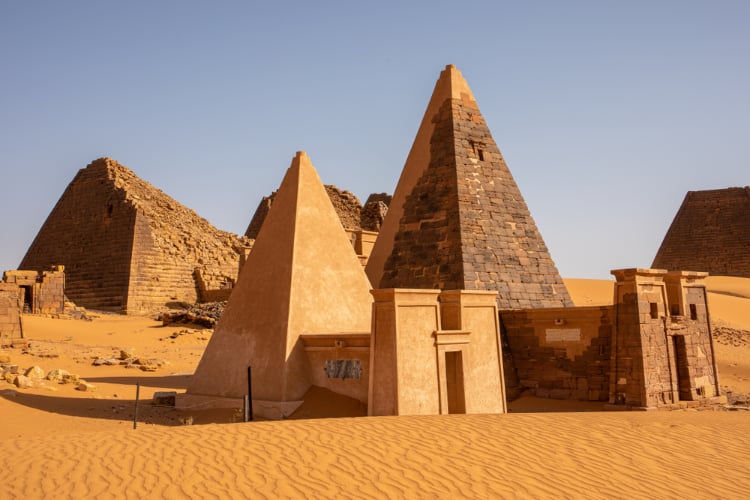
The Assyrian invasion of Egypt led to the downfall of the Black Pharaohs. Once the Nubian pharaohs lost power, they retreated south to the city of Meroë, which became the new capital. Meroë also became the last burial site of Kush’s royal pharaohs. No wonder one of the biggest congregations of Kushite pyramids, with the burial tombs of more than 30 members of the royal family, is found here.
Similarities and Differences Between Egyptian and Sudan Pyramids
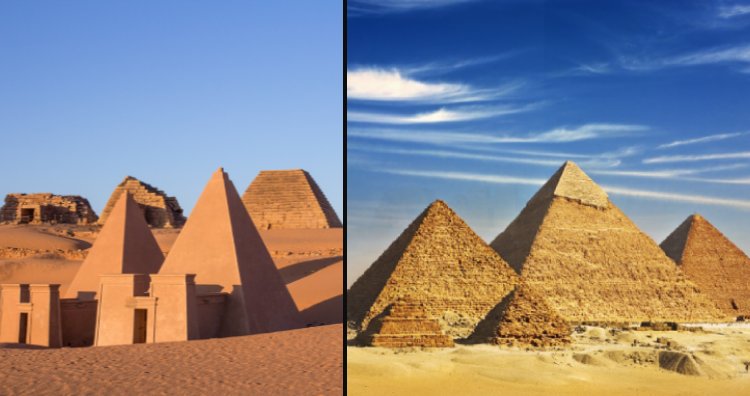
The Nubian pyramids are not as old and large as the Egyptian pyramids. Most Nubian pyramids were built nearly 2,000 years after those at Giza. While the ancient Egyptians largely abandoned pyramids and started constructing hidden tombs, the Nubians continued to use pyramids. Both Egyptians and Nubians entombed the royal family members in these massive structures. However, the construction and design of these pyramids are different.
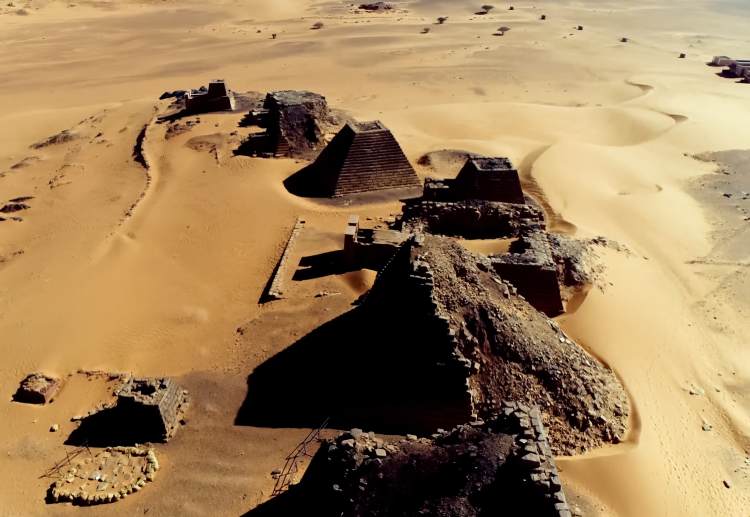
The Nubian pyramids, built from stepped stones, are narrower and steeper than the Egyptian pyramids with smooth surfaces. Not all Nubian tombs are dedicated to the royals, as in the case of Egyptian pyramids. Some of the nobles were buried in Nubian pyramids as well. Furthermore, the burial chambers of the Nubian pyramids are typically located underground, beneath the pyramid structure, whereas the burial chambers of the Egyptian pyramids are inside the pyramid itself.
Uncovering the Secrets of the Sudan Pyramids
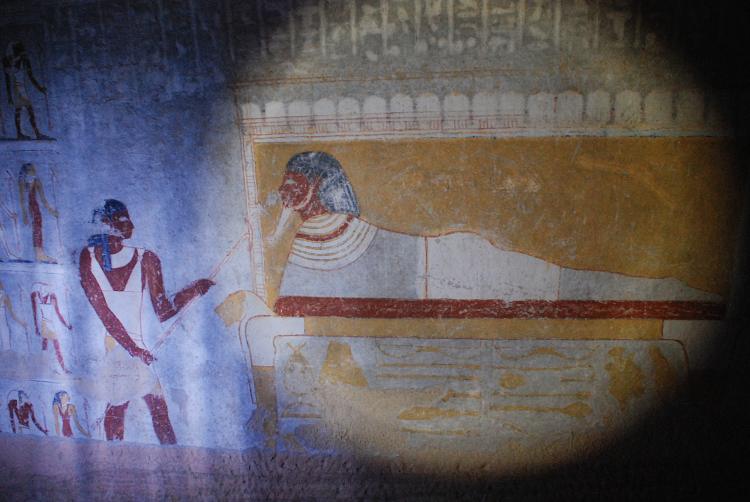
The Meroë pyramids are built atop incredible desert landscapes, far from crowds. Visitors can explore the insides and outsides of most pyramids, where they can see the ancient hieroglyphics etched into the walls. Since Sudan’s tourism industry has been primarily impeded due to the two civil wars and political unrest, the pyramids in Sudan are not as famous as those in Egypt. Nevertheless, the Sudanese consider the pyramids important to their national identity and pride.
Despite the historical information regarding the Sudanese pyramids, researchers still have many unanswered questions. For example, did the Nubians use the same method as the Egyptians to construct the pyramids? How long did it take to erect these structures? A team of archaeologists is trying to find these answers by using drones to scan the area and gather more information.
So, even though Egypt’s pyramids have gained better attention worldwide, the marvelous congregation of Sudanese pyramids must be noticed. Furthermore, we have a lot more mysteries to be uncovered about them.














